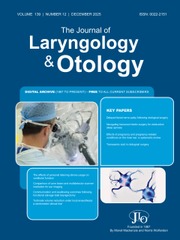No CrossRef data available.
Article contents
Face and content validation of additive manufacturing temporal bone specimens
Published online by Cambridge University Press: 11 November 2024
Abstract
Otology training solely using cadavers is challenging because of scarcity and high costs. The use of additive manufacturing technology is a promising alternative. This study aimed to qualitatively validate new additive manufacturing temporal bone specimens for their realism and ability to train surgical skills.
Three additive manufacturing models generated using cadaveric temporal bones were evaluated. Three otologists with experience as trainers dissected and evaluated each specimen.
The additive manufacturing specimens scored an average of 4.26 ± 0.72 (out of 5) points and received positive feedback. The agreement between the three expert raters was high (intra-class correlation coefficient of 0.745).
The results suggested that the additive manufacturing temporal bones were able to faithfully reproduce a training experience similar to that on cadaveric temporal bones. Further studies that investigate the effectiveness of these specimens in training surgical skills are needed before integrating them into surgical training curricula.
Keywords
- Type
- Main Article
- Information
- Copyright
- © The Author(s), 2024. Published by Cambridge University Press on behalf of J.L.O. (1984) LIMITED.
Footnotes
Jesslyn Clarance Lamtara takes responsibility for the integrity of the content of the paper


